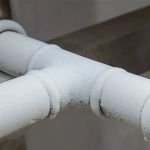
What Causes Discolored Water and When to Worry
- 1- Understanding Water Discoloration Causes
- 2- Common Causes of Discolored Water
- 3- When to Worry About Discolored Water
- 4- How to Prevent Water Discoloration
- 5- How to Deal with Discolored Water
Discolored water in your home can be both alarming and inconvenient, but understanding its causes and when to worry can help you address the issue quickly. Whether the water is rusty, brown, or even yellow, it's essential to know what could be happening in your plumbing system or water supply. In this guide, we will explore the common causes of discolored water, when it’s a sign of a bigger issue, and how to resolve or prevent it.

Pro Plumbers & Drain services of Pittsburgh
PittsburghAllegheny CountyPennsylvania
5338 Kincaid St, Pittsburgh, PA 15224, USA
1- Understanding Water Discoloration Causes
Discolored water occurs when substances such as sediment, rust, or minerals mix with your water supply. These particles can result from issues in your plumbing system, municipal water sources, or natural conditions affecting water treatment facilities. The color of the water can vary, and each color often points to a specific cause. The key to resolving the problem lies in identifying the source of contamination.
2- Common Causes of Discolored Water
Discolored water can be caused by several factors. Here are the most common causes:
1. Rusty Pipes and Sediment
One of the most frequent causes of brown or reddish water is rust from old or corroded pipes. As pipes age, especially if they’re made of iron, rust and other sediment can build up and mix with the water, leading to discoloration.
2. Water Main Breaks or Repairs
When water mains break or are being repaired, it can stir up sediments and rust from the pipes. This can lead to temporarily discolored water in your home, typically for a short period after a disruption in your water supply.
3. High Mineral Content
Sometimes, water can take on a yellow or cloudy appearance due to high mineral content, especially if you live in an area with hard water. Minerals like iron, calcium, and magnesium can cause cloudiness or a slight yellowish tint.
4. Chemical Contamination
In rare cases, water may become discolored due to chemical contamination, such as from industrial spills or improper disposal of waste into water sources. These contaminants can turn the water brown, yellow, or green, depending on the chemicals involved.
3- When to Worry About Discolored Water
While discolored water is often harmless, there are certain situations when it’s important to take action and seek professional help:
1. Persistent Discoloration
If the water remains discolored for more than a few hours or days, it may indicate a serious issue in the plumbing or water source that needs to be addressed. For example, rust from aging pipes may worsen over time and require pipe replacement.
2. Foul Odor
If your water is not only discolored but also has a strong, unpleasant smell, this could indicate bacterial contamination or the presence of harmful chemicals. This is a situation where professional testing and treatment are essential to ensure the safety of your drinking water.
3. Health Concerns
Discolored water that may be caused by sewage, industrial waste, or other harmful contaminants should always be treated as a serious issue. If you suspect your water has been contaminated with hazardous substances, avoid drinking or using the water and contact a professional immediately.
4- How to Prevent Water Discoloration
Preventing water discoloration can often be achieved with regular maintenance and monitoring. Here are some tips to help keep your water clean:
1. Regular Plumbing Inspections
Having your plumbing inspected regularly by a licensed plumber can help you catch issues like corroded pipes before they cause problems. Replacing old iron or galvanized steel pipes with modern materials such as copper or PVC can also help prevent rust and sediment buildup.
2. Use Water Filtration Systems
Installing a whole-house water filtration system can help filter out minerals and sediment that contribute to discoloration. These systems are especially beneficial in areas with hard water or high levels of sediment in the municipal water supply.
3. Flushing the System
Flushing your pipes periodically can help clear out any buildup of minerals, rust, or sediment. This can be especially useful after water main repairs or when you notice a temporary discoloration.
5- How to Deal with Discolored Water
If you notice discolored water, follow these steps to resolve the issue:
1. Run the Tap
Sometimes, discolored water is a temporary issue, and simply running the tap for a few minutes can clear the problem. This is especially true if the discoloration is due to a temporary disturbance in the water supply.
2. Check with Your Water Utility
If the discoloration persists, contact your local water utility to inquire about potential water main breaks or repairs in your area. They may be able to provide more information and let you know if the issue is widespread.
3. Call a Professional
If the issue is related to your home’s plumbing system, it may be time to call a professional plumber. A plumber can assess your pipes, determine if there is any rust or corrosion, and offer solutions such as pipe replacement or cleaning to restore the quality of your water.
By understanding the causes of discolored water and when to worry, you can take proactive steps to maintain clean water in your home. If you experience persistent discoloration or suspect your water is contaminated, don’t hesitate to reach out to a professional plumber. For more information and to get the right products for your plumbing needs, visit Plumbers Supply Hub.








 Oakland Plumbing LLC5.0 (17 reviews)
Oakland Plumbing LLC5.0 (17 reviews) Midwest Plumbing & Service4.0 (7 reviews)
Midwest Plumbing & Service4.0 (7 reviews) Moberly Plumbing4.0 (117 reviews)
Moberly Plumbing4.0 (117 reviews) American Trenchless Technologies4.0 (8 reviews)
American Trenchless Technologies4.0 (8 reviews) Tony's Plumbing3.0 (12 reviews)
Tony's Plumbing3.0 (12 reviews) Socal Plumbing Co5.0 (5 reviews)
Socal Plumbing Co5.0 (5 reviews) How to Repair a Hairball Clog Without Harsh Chemicals
How to Repair a Hairball Clog Without Harsh Chemicals How to Repair a Junction That Is Leaking Under Slab: A Comprehensive Guide
How to Repair a Junction That Is Leaking Under Slab: A Comprehensive Guide How to Replace a Sink Overflow Tube: A Complete Step-by-Step Guide
How to Replace a Sink Overflow Tube: A Complete Step-by-Step Guide What Causes Frozen Pipes and How You Can Prevent It - Expert Tips
What Causes Frozen Pipes and How You Can Prevent It - Expert Tips How to Replace a Shower Niche Drain: Step-by-Step Guide for Homeowners
How to Replace a Shower Niche Drain: Step-by-Step Guide for Homeowners How to Replace an In-Wall Shower Drain: Step-by-Step Guide
How to Replace an In-Wall Shower Drain: Step-by-Step Guide